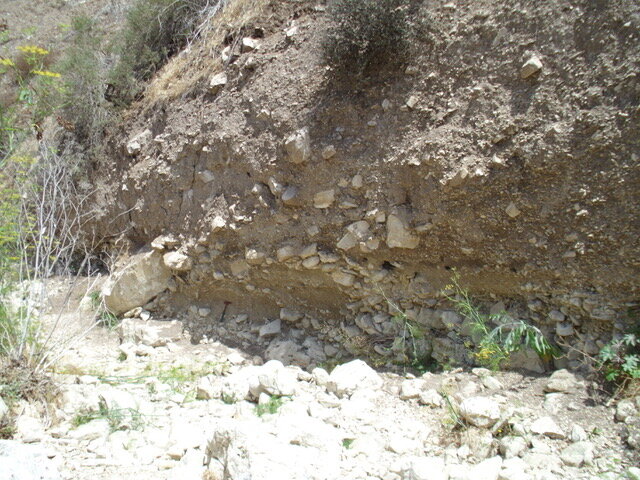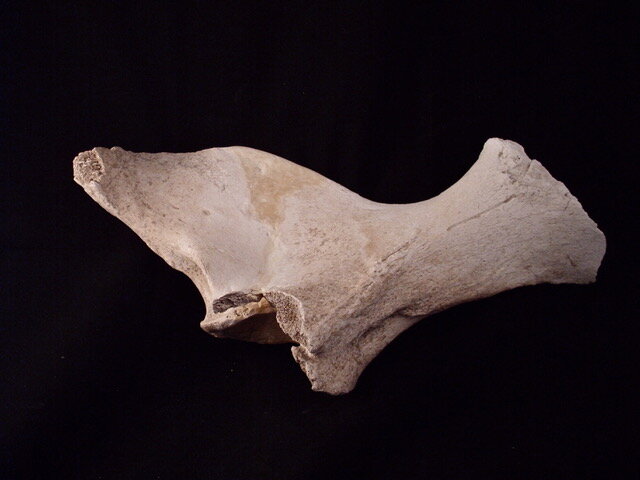FOSSIL WITH HUMAN BUTCHERING MARKS CONFIRMED TO BE 13,500 YEARS OLD By Joe Cõcke & Stan Corbett
FOSSIL WITH HUMAN BUTCHERING MARKS CONFIRMED TO BE 13,500 YEARS OLD.
By Joe Cõcke & Stan Corbett
Probably the earliest evidence of human life in California and one of the earliest dates in the Americas
In May 2012, I was taking my usual weekly hike on the Peninsula searching for fossils. As I approached the 25 foot sheer cliff at the upper end of Lunada Canyon, I saw a piece of bone sticking out of the bottom of the cliff face. The canyon walls were steep and unstable so I used a six foot pole with a nail on the end to dig out the bone,which appeared to be a bison pelvis. When I washed off the specimen at home, I saw five cut marks on the bone. The orderly cuts were almost certainly made by humans scraping the meat from the pelvis. Old bones can slowly accumulate a thin layer of calcium carbonate as they fossilize. Under a microscope, I could see that not only the bone but also the inside of the cut marks were covered with this thin layer; the cuts were as old as the bone.
The Page Museum at the La Brea Tar Pits confirmed that the bone was indeed not only a pelvis from a bison but from a bison that is now extinct (Bison antiquus). The pelvis was then sent to the Long Beach State Archeology Department to have the fossil Carbon-14 dated. There was not enough collagen in the bone to do carbon dating but the lab offered to perform a more involved, more accurate test measuring the luminescence of quartz crystals in the soil around the fossil. Much like carbon dating, which is based on the known decay rate of Carbon-14, luminescence dating utilizes the known decay rate of the luminescence of quartz crystals when last exposed to sunlight. We went back to the original fossil site on a moonless night, dug to expose and expand the area and collected virgin dirt which also contained minute quartz crystals. We wrapped the soil in a black tarp and returned the sealed package to the lab.
Last week the lab gave me their exciting results. The lab ran 13 separate tests and the tests confirmed the fossil to be 13,500 years old (EN: Is that what you call nine years older than dirt?). Moreover, the lab did electron microscope tests on the five cuts and concluded that the cuts were most likely made with an obsidian blade, not metal or other stone.





